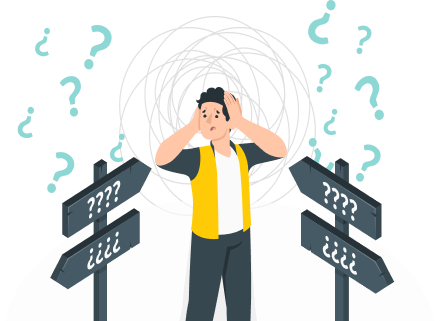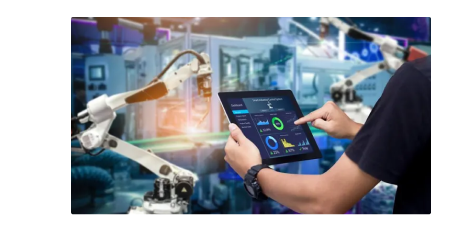#TakeCharge with #Aimshala
How make a career in Animator
A career as an Animator in the healthcare industry offers the chance to create engaging visual content that can aid in medical education, patient communication, and health awareness. To embark on this career path, individuals typically need a strong academic background in animation, graphic design, or a related field. Pursuing a bachelor's degree is essential, followed by potential specialization in medical animation or related areas. Gaining practical experience through internships, portfolio development, and working on healthcare-related projects enhances employability. Networking with healthcare professionals and staying updated with the latest animation technologies and practices are also crucial. With a blend of education, experience, and passion for animation, one can build a rewarding career dedicated to advancing healthcare communication.
Career in Animator
What are the roles and responsibilities in Animator?
- Creating Medical Animations : Animators design and produce animations to visually explain medical procedures, anatomy, and health concepts.
- Collaborating with Healthcare Professionals : They work closely with doctors, researchers, and educators to ensure accuracy in the animations and meet the specific needs of the audience.
- Storyboarding : Animators develop storyboards that outline the visual narrative and flow of the animation project.
- Editing and Refining Animations : They review and revise animations based on feedback from clients or stakeholders to enhance clarity and engagement.
- Staying Updated with Technology : Healthcare Animators continually learn new software and techniques to improve their animation skills and adapt to industry trends.
What education is required to study Animator
Check out the dates of the total number of candidates who have appeared in the CUET 2022 exam from the below table.
Stream |
Graduation |
After Graduation |
After Post Graduation |
|
|
Path 1 |
Completion of high school with a focus on art, design, and computer science. |
Bachelor of Arts in Animation, Graphic Design, or a related field. |
Master's degree in Medical Animation or a specialized field. |
Certifications in animation software or medical communication for enhanced career opportunities. |
|
Path 2 |
Completion of high school with emphasis on visual arts or vocational training in multimedia. |
Bachelor's degree in Multimedia Arts or Digital Media. |
Master's degree in Animation or Health Communication. |
Workshops or courses in specific animation technologies or healthcare topics. |

Feeling unsure about
your future?
Let's find the perfect career path for you!
with AI-powered career
guidance

What are the key skills required for Animator
- Artistic Skills - These skills are crucial for creating visually appealing and accurate animations that effectively communicate health concepts.
- Technical Skills - Proficiency with animation software such as Adobe After Effects, Maya, or Blender is important for executing animation projects.
- Communication Skills - Effective communication is vital for collaborating with healthcare professionals and understanding their needs.
- Attention to Detail - The ability to focus on intricate details is essential for ensuring accuracy in medical animations.
- Project Management Skills - Managing animation projects efficiently, including timelines and client feedback, is key to successful outcomes.
What are the career opportunities in Animator?
- Medical Illustrator - Medical Illustrators create detailed illustrations for medical textbooks, journals, and educational materials.
- 3D Modeler - 3D Modelers create three-dimensional representations of anatomical structures and medical devices for educational purposes.
- Motion Graphics Designer - Motion Graphics Designers develop animated graphics for healthcare marketing, educational videos, and presentations.
- Visual Effects Artist - Visual Effects Artists create special effects for healthcare-related videos, enhancing storytelling through visuals.
- Healthcare Marketing Specialist - These specialists utilize animation in marketing campaigns to promote healthcare services and products.
What is the salary and demand for Animator?
- Salary Overview - The typical salary for Healthcare Animators ranges from $50,000 for entry-level positions to over $90,000 for experienced professionals, with variations based on education and location.
- Regional Salary Variations - Salaries can vary significantly by region; for example, animators in urban centers or regions with a high concentration of healthcare organizations may earn more.
- Current Job Market Demand - The demand for Healthcare Animators is increasing due to the growing need for visual communication in medical education and patient engagement.
- Future Demand Projections - Future demand for Healthcare Animators is expected to rise as the healthcare industry increasingly adopts digital communication strategies.
Leading companies for careers in Animator

Medical Animation Company

Health Animation Studio

Animedia

Healthcare Visuals

3D Health Animations

MediVisuals

Visual Health Productions

Health Animation Group
What are the best colleges for Animator in India?
Undergraduate
College |
Location |
Website |
|
National Institute of Design |
Ahmedabad |
https://www.nid.edu |
|
Maya Academy of Advanced Cinematics |
Mumbai |
https://www.maacindia.com |
|
Srishti Institute of Art, Design and Technology |
Bengaluru |
https://www.srishti.ac.in |
|
Whistling Woods International |
Mumbai |
https://www.whistlingwoods.net |
|
D J Academy of Design |
Coimbatore |
https://www.djad.in |
Postgraduate
College |
Location |
Website |
|
National Institute of Design |
Ahmedabad |
https://www.nid.edu |
|
Maya Academy of Advanced Cinematics |
Mumbai |
https://www.maacindia.com |
|
Srishti Institute of Art, Design and Technology |
Bengaluru |
https://www.srishti.ac.in |
|
Whistling Woods International |
Mumbai |
https://www.whistlingwoods.net |
|
Indian Institute of Technology, Bombay |
Mumbai |
https://www.iitb.ac.in |
What are the best colleges for Animator in Abroad?
College |
Location |
Website |
|
Gobelins, l'école de l'image |
Paris, France |
https://www.gobelins.fr |
|
California Institute of the Arts |
Valencia, California, USA |
https://www.calarts.edu |
|
Rhode Island School of Design |
Providence, Rhode Island, USA |
https://www.risd.edu |
|
University of Southern California |
Los Angeles, California, USA |
https://www.usc.edu |
|
School of Visual Arts |
New York City, New York, USA |
https://www.sva.edu |
What are the top entrance exams in India for pursuing a career in Animator
College |
Tentative Date |
UG/PG |
Important Elements |
Website |
|
National Institute of Design |
May |
Postgraduate |
Design Aptitude Test, General Knowledge, and English. |
https://www.nid.edu |
|
Maya Academy of Advanced Cinematics |
June |
Undergraduate |
Portfolio Review and General Knowledge. |
https://www.maacindia.com |
|
Srishti Institute of Art, Design and Technology |
April |
Postgraduate |
Design Aptitude Test and Interview. |
https://www.srishti.ac.in |
|
Whistling Woods International |
July |
Postgraduate |
Portfolio Review and Interview. |
https://www.whistlingwoods.net |
|
Indian Institute of Technology, Bombay |
January |
Postgraduate |
Graduate Aptitude Test in Engineering (GATE). |
https://www.iitb.ac.in |
Pros & Cons of a Career in Animator
Pros
- Animators in healthcare contribute significantly to patient education and health awareness, making their work impactful.
- The field offers competitive salaries, especially for those with advanced degrees and specialized skills.
- Professionals in this field have the opportunity to work on innovative projects that can improve healthcare communication.
- The career provides opportunities for continuous learning and advancement in a dynamic and evolving field.
Cons
- The job can be demanding with tight deadlines, especially when producing animations for healthcare campaigns.
- Some roles may require extensive collaboration with medical professionals, which can be challenging.
- Funding uncertainties in healthcare projects can lead to job instability or limited resources.
- The work can sometimes be isolating, especially for those engaged in extensive project work away from teams.
Did you find this information helpful?


Report
0 out of 0 found this helpful


